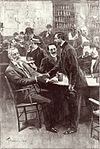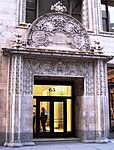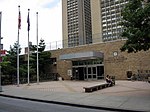Winter Garden Theatre (1850)
1850 establishments in New York (state)1867 disestablishments in the United States1867 fires1867 in the United StatesBuilding collapses caused by fire ... and 9 more
Building collapses in the United StatesBuilding fires in New York CityBurned buildings and structures in the United StatesDemolished buildings and structures in ManhattanDemolished theatres in New York CityFormer Broadway theatresFormer theatres in ManhattanJohn M. Trimble buildingsTheatres completed in 1850

The first theatre in New York City to bear the name The Winter Garden Theatre had a brief but important seventeen-year history (beginning in 1850) as one of New York's premier showcases for a wide range of theatrical fare, from variety shows to extravagant productions of the works of Shakespeare. Initially known as Tripler's Hall or Metropolitan Hall, it burned down in 1854 and was rebuilt as The New York Theatre. Although it burned to the ground several times, it rose from the ashes under different managers, bearing various names, to become known as one of the most important theatres in New York history.
Excerpt from the Wikipedia article Winter Garden Theatre (1850) (License: CC BY-SA 3.0, Authors, Images).Winter Garden Theatre (1850)
Broadway, New York Manhattan
Geographical coordinates (GPS) Address Nearby Places Show on map
Geographical coordinates (GPS)
| Latitude | Longitude |
|---|---|
| N 40.7259 ° | E -73.9962 ° |
Address
Broadway 622
10012 New York, Manhattan
New York, United States
Open on Google Maps








